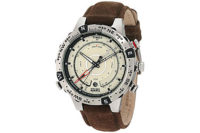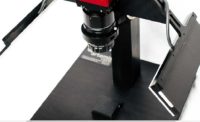Many assembled products feature metal or plastic bearings, which enable linear or rotational movement while reducing friction and handling stress. But, only products with precision mechanics feature miniature jewel bearings made of sapphire, ruby or hard glass. These bearings prevent metal-on-metal friction that quickly and significantly reduces contact surface areas.
Since 1914, La Pierrette S.A. (LPSA) has supplied jewel bearings to many of the world’s most prestigious watch and timepiece makers. Several of these companies make products that bear the Geneva Seal stamp and meet the high quality, precision and reliability requirements of the Watchmaking School of Geneva.
LPSA produces both simple and complex synthetic sapphires and rubies at its main plant in Switzerland’s Joux Valley, considered to be the cradle of fine watchmaking. All LPSA gemstones are calibrated and qualified by METAS, the Swiss Federal Office of Metrology and Accreditation. The company has more than 100 employees.
“Manufacturing jewel bearings is a complex process [that requires] diamond machining to tight manufacturing tolerances,” explains Romain Conti, staff member of the R&D department at LPSA. “Depending on the target characteristics, tolerance intervals are between 2 and 8 microns. These machines [also perform] many metrology operations.”
After the jewels are produced, the bearings are assembled and polished prior to final inspection. For many years, LPSA workers manually inspected each bearing. This process takes a long time because many bearing dimensions have to be repeatedly verified.
In 2014, LPSA installed an IM-6000 instant measurement system by Keyence Corp. of America to improve inspection rate and accuracy. By quickening inspection, LPSA is able to increase upon its annual production volume of several million pieces.
Bearing inspection involves an inspector placing the bearing on the system’s viewing platform and pressing the start button. Within seconds, up to 99 points are measured with a high degree
of accuracy, including depth and height. All data is automatically recorded and saved, and can be printed out in reports. The automatic system’s repeatability of ±1 micron eliminates all inter-operator variability problems.
“We have to inspect every visible piece both in terms of conformity and appearance,” explains Conti. “However, our production volume allows us to inspect only a small fraction of the other pieces. The IM system makes the inspection process five times faster and improves our product quality.
“That, coupled with the fact that the system lets us directly view measurement statistics, helps us to identify production deviations much quicker,” continues Conti. “Not only can we inspect a series of pieces at the same time, but our measurements are more complete because we can now also check for flaws in shape. ”
During the IM system’s initial probationary period, LPSA inspectors made sure that bearing measurements from the system matched or exceeded those obtained manually. Since being put into actual service, the IM-6000 has operated flawlessly and is used regularly by up to six people.
Keyence recently introduced the IM-7000 series instant measurement system with a much larger platform of 300 by 200 millimeters. The company’s other automation products include sensors, static eliminators, bar code readers, vision systems, laser markers and digital microscopes.
For more information on image measurement systems, call 888-539-3623 or visit www.keyence.com.





